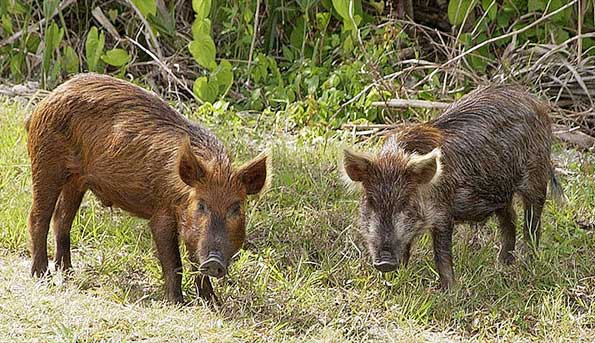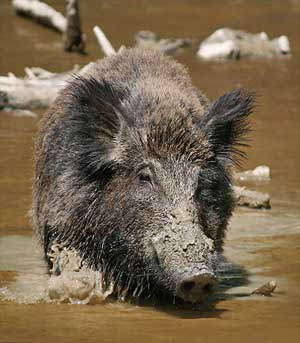View FLORIDA GEOGRAPHY in a larger map
Florida’s Green Swamp, which lies just west of Highway 27 in Polk, Lake, Sumter, Hernando and Pasco Counties. Headwaters of the Peace River, Withlacoochee River, Ocklawaha River, and Hillsborough River, are located at the Green Swamp. Walt Disney World Resort is about four miles east of Green Swamp, which is also just north of Lakeland, Florida.
Fresh water from the Peace River is vital to maintain the delicate salinity of Charlotte Harbor that hosts several endangered species, as well as commercial and recreational harvests of shrimp, crabs, and fish. The river has always been a vital resource to the people in its watershed.
A Significant Habitat
Green Swamp, at 870-square-miles that spans five counties, is a large expanse of poorly drained flat terrain, where the groundwater is close to the surface. Much of the area is a mosaic of wetlands, mesic flatlands and uplands, subject to seasonal flooding. Flood and fire largely govern the composition and distribution of vegetation, creating a distinctive mosaic of natural communities. Flooding also limits intensive agriculture and large-scale development, resulting in one of Florida’s most significant natural areas.
The Green Swamp is recognized by the state of Florida for its ecological and hydrological importance. The Green Swamp has the unique ability to store surface water and slow the flow of floodwaters while sustaining rivers and streams. Its relatively high elevation, together with a shallow depth to the aquifer, keeps water levels high. The water table for much of the year stands above the potentiometric surface of the Floridan aquifer, providing recharge to the area.
The makeup of the Green Swamp puts pressure onto the aquifer, helping to push water through to the Gulf of Mexico. The water flowing from the Green Swamp is generally of higher quality than other watersheds. This is due to the Green Swamp being largely undeveloped, plus its lengthy surface water detention time.
Properties in the region are privately or publicly held. Much private land is improved pasture or other altered lands, with scattered natural areas. Most public lands, approximately one-third of the Green Swamp area, are primarily natural plant communities and habitats with widely scattered stands of altered lands. Public lands are typically managed for the conservation and restoration of natural resources. Natural plant communities in the area include:
Upland hardwoods (xeric hammock, sandhills and oak scrub)
Herbaceous wetlands (wet prairies, marshes))
Pine flatwoods (mesic and xeric)
Cypress swamps (domes and strands)
Floodplain swamps (bottomland forest, hydric hammock, bayhead, riverine)
These natural communities support populations of an estimated 330 species of wildlife. Among this population are more than 30 threatened or endangered species, including the Florida black bear, Florida scrub jay and wood stork. Widespread species such as white-tailed deer, wild turkey, alligators, and numerous songbirds and wading birds are also common throughout the Green Swamp.
The serenity and seclusion of the Green Swamp allows for quiet observation and study of a variety of plants, mammals, birds, reptiles, fish, invertebrates and amphibians within the natural landscape.
Exotic Species Control
The Green Swamp’s Florida climate makes it an ideal place for things to grow. Green Swamp is an environmentally sensitive area extremely vulnerable to invasion by exotic species, or non-native species. If conditions are right, an exotic can easily thrive, take over and crowd out native plants and animals.
The invasion of native plant communities by exotics is widely recognized as one of the most dangerous threats to Florida’s environment. Cogon grass, tropical soda apple and skunkvine are some of the exotic species that are found in the Green Swamp. Today, these exotics and others are targeted for removal and control to protect the environment. The District has established formal procedures to identify, document and control these plants on District lands and waterways.


Exotic animals, too, can upset the natural balance in this fragile environment. Feral hogs (aka Razorbacks or wild boars), introduced centuries ago by Spanish explorers, have damaged entire forests and pasturelands within the Green Swamp Wilderness Preserve, and continue to pose a threat to the area’s ecosystem.
Recreation
The Green Swamp Wilderness Preserve includes areas that cherished for their exquisite scenic beauty. Acquired as public lands, these areas are open for recreation, with the understanding that their use maintains and preserves the Green Swamp’s natural state.
With 98 percent of the area open for public access, the Green Swamp Wilderness Preserve is an ideal place to experience natural Florida. More than 30,000 people visit the Preserve each year to enjoy various recreational opportunities. Activities available in the preserve include hunting, fishing, horseback riding, camping, hiking, canoeing and bicycling. Be prepared for hot sun on open, sandy roads with shaded areas that may be muddy. The District has produced a Recreational Guide that lists areas open for recreation on various District-owned lands.
Historical structures in Green Swamp leave a reminder of a past not forgotten. Some of the structures have been moved to the Pioneer Museum in Dade City, Florida. The remaining structures in the Green Swamp have or will be refurbished for office space and public use.
Trails for Hiking
Of all the recreational activities in the Green Swamp, hiking is perhaps the most environmentally friendly way to enjoy this extensive wilderness. Footpaths and trails abound in the Preserve. They range from short trails perfect for day hikes, to longer, extended loops and linked networks more suitable for overnight backcountry hikes. The District and the Florida Trail Association (FTA) have worked together to provide hiking trails in the Green Swamp Wilderness Preserve. The 20-mile Green Swamp Trail has been developed and maintained by the FTA, and 13.1 miles are part of the Florida National Scenic Trail. The Green Swamp Trail bridges the entire distance of the Green Swamp Wilderness Preserve. At various points along the Green Swamp Trail, three hike-in campsites have been created to accommodate overnight guests. These campsites are open to hikers only and must be reserved in advance through the District. Other hiking trails include a short path at the Withlacoochee River Park, and the Van Fleet State Trail that borders the eastern property line of the Green Swamp Wilderness Preserve.
Bicycling, Horseback Riding and Canoeing
Trails for bicycling and horseback riding are available on 42 miles of service roads. Future trails may be created that provide a pleasing trail riding experience, have a low impact to natural areas and are compatible with the wilderness quality of the preserve.
Canoeing through the Green Swamp on the Withlacoochee River offers a true wilderness experience. Nearly 36 miles of the Withlacoochee’s 110-mile length are preserved within the Green Swamp Wilderness Preserve. Some areas of the river are inaccessible due to the poorly defined river channel, logjams, aquatic vegetation and, during some parts of the year, low-water levels. A river campsite is accessible with permit.

Be the first to comment